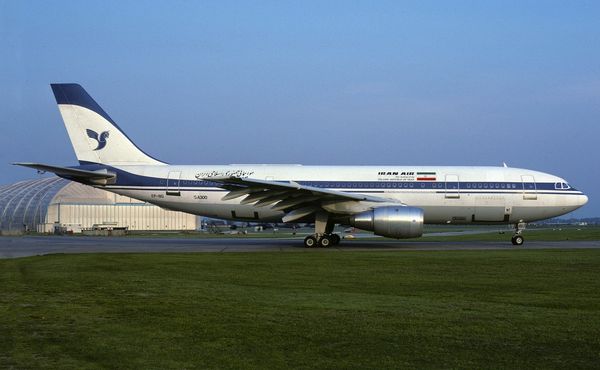Emirates is introducing stricter safety measures by banning the use of all power banks during flights starting October 1, 2025. Passengers will still be allowed to bring one power bank under 100 watt-hours (Wh) in their carry-on, but it can no longer be used to charge electronics in-flight or be charged from the aircraft’s outlets.

The decision comes after a detailed safety review and growing concerns in the aviation industry about lithium battery fires. Although Emirates has long complied with International Air Transport Association (IATA) rules, the airline is now going further than the standard by prohibiting any in-flight use of power banks, regardless of their size.
Key Changes Passengers Should Know
- Only one power bank under 100-Wh per passenger will be permitted.
- Charging devices from the power bank in-flight is prohibited.
- Charging the power bank using the aircraft's outlets is prohibited.
- Power banks must be stored in the seat pocket or under the seat, not in overhead bins.
- Power banks remain banned from checked baggage.
- Capacity ratings must be clearly marked on the device.
Why Emirates is Taking Action
Power banks use lithium-ion or lithium-polymer batteries, which can overheat and ignite if damaged, overcharged, or poorly made. The biggest danger comes from thermal runaway, a chain reaction in which heat inside the battery cell rises uncontrollably, potentially leading to fire, explosion, and the release of toxic gases.
This risk is not just theoretical. Just a few days ago, passengers on KLM Flight KL792 from São Paulo to Amsterdam were startled awake when a portable charger caught fire mid-flight. The fire started inside a carry-on bag approximately four hours before landing, filling the cabin with smoke. Cabin crew quickly deployed extinguishers, followed emergency protocols, and contained the blaze. No one was injured, and the aircraft landed safely in Amsterdam, but the incident left passengers shaken and highlighted the real danger these devices can pose in an aircraft cabin.

Such incidents are becoming more frequent worldwide. Aviation authorities have reported a steady increase in smoke and fire cases linked to personal electronics and battery packs. While laptops and higher-end devices often include advanced safety features, many low-quality power banks lack overcharge protection and proper quality control, making them far riskier in the tight confines of a pressurized cabin.
Reducing Risks Onboard
By banning in-flight charging and requiring power banks to be stored within reach, Emirates aims to lower the chances of a battery overheating without anyone noticing. Keeping these devices in a visible and accessible location allows crew members to act quickly if a problem arises.
While similar rules are enforced in China, Emirates’ approach is more restrictive than IATA’s, which allows up to two spare batteries of 160 Wh each with airline approval.

Impact on Travelers
On newer Emirates aircraft with reliable USB and AC outlets at each seat, most passengers may not be affected very much. However, those on slightly older airframes that have broken chargers or are carrying several devices will need to plan, ensuring everything is fully charged before boarding and bringing smaller, compliant power banks for use at their destination.
Although some travelers will see this as inconvenient, the KLM KL792 incident shows why airlines are willing to act. Emirates has made it clear that when it comes to safety in the sky, prevention is always the priority.
Marco Polo Airport to Cavallino: Clear Routes, Costs to Expect, and the Smoothest Arrival » Air Premia Eyes Washington-Dulles Service for 2026 » Airbus Issues Urgent Safety Directive After Discovery of Solar Radiation Data Corruption Risk in A320 Family »
Comments (2)
 Bryan Manson
What about using a CPAP machine on an overnight flights? Typically, CPAP machines are prohibited from being connected to the aircrafts electrical system. This is Air Canada's policy.
Bryan Manson
What about using a CPAP machine on an overnight flights? Typically, CPAP machines are prohibited from being connected to the aircrafts electrical system. This is Air Canada's policy.
 MikeInPA
My thoughts also ...
MikeInPA
My thoughts also ...
Add Your Comment
SHARE
TAGS
NEWS Emirates Emirates Airlines Safety Power Banks Fire Lithium Lithium-ionRECENTLY PUBLISHED
 Essential Legal Tips for Tourists Chartering a Yacht in Dubai
Discover how yacht rentals in Dubai are regulated and learn what every tourist should know about contracts, insurance, and taxes before setting sail.
TRIP REPORTS
READ MORE »
Essential Legal Tips for Tourists Chartering a Yacht in Dubai
Discover how yacht rentals in Dubai are regulated and learn what every tourist should know about contracts, insurance, and taxes before setting sail.
TRIP REPORTS
READ MORE »
 Mixed Signals: The Tragic Story of Iran Air Flight 655
What would have otherwise been a routine passenger flight across the Strait of Hormuz culminated in a heartbreaking tragedy, all because of a costly system misunderstanding by an external party. This is the tragic story of Iran Air Flight 655.
STORIES
READ MORE »
Mixed Signals: The Tragic Story of Iran Air Flight 655
What would have otherwise been a routine passenger flight across the Strait of Hormuz culminated in a heartbreaking tragedy, all because of a costly system misunderstanding by an external party. This is the tragic story of Iran Air Flight 655.
STORIES
READ MORE »
 My Unexpectedly Cheap Last-Minute Getaway with JetBlue Airlines
My name is Daniel Moreno. I live in Tampa, Florida, and I work as a logistics coordinator at a small distribution company. I had to book a JetBlue Airlines flight at the last minute. I was sure the price would be high because that’s usually what happens with late bookings within the United States. But the final cost surprised me — the ticket was much cheaper than I expected.
TRIP REPORTS
READ MORE »
My Unexpectedly Cheap Last-Minute Getaway with JetBlue Airlines
My name is Daniel Moreno. I live in Tampa, Florida, and I work as a logistics coordinator at a small distribution company. I had to book a JetBlue Airlines flight at the last minute. I was sure the price would be high because that’s usually what happens with late bookings within the United States. But the final cost surprised me — the ticket was much cheaper than I expected.
TRIP REPORTS
READ MORE »



